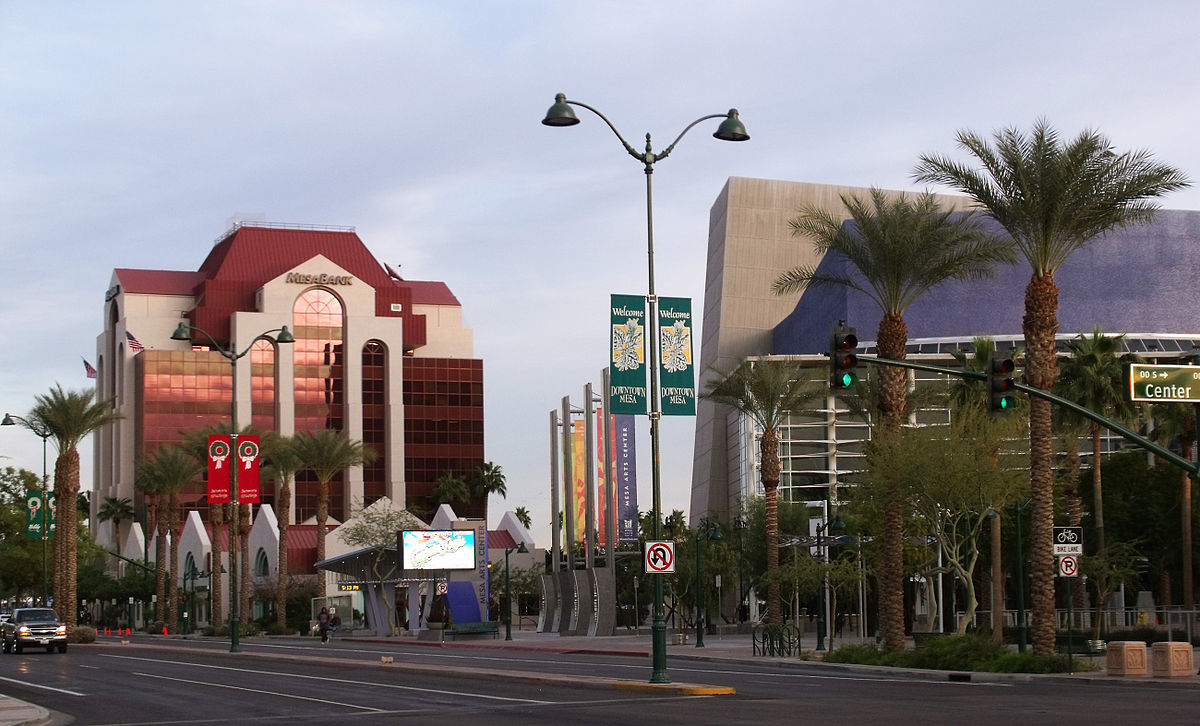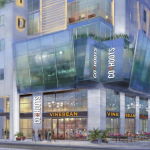Original Article via Phoenix Business Journal
The Mesa Arts Center, Benedictine University and the extension of the Metro light rail down Main Street are part of the city’s efforts to revitalize the downtown area and form an innovation district similar to the successful transformation of downtown Phoenix.
City, education and business leaders joined together Thursday morning at the Mesa Arts Center to talk about the rise of Mesa’s innovation district.
A variety of institutions are under negotiations and coming in the future, said William Jabjiniak, Mesa’s economic development director.
Arizona State University, which has about 12,000 students at the Polytechnic campus in east Mesa, is talking to city leaders to have a possible downtown presence, said Scott Butler, Mesa’s deputy city manager. The Tempe campus is also about 15 minutes from downtown Mesa, he added.
“The concept of an innovation district is clustering all these things together,” Butler said. “We would love to have an ASU presence downtown. We are having a lot of meaningful conversations to bring people to Mesa as we look for partnerships to grow our economic footprint.”
The Phoenix-based co-working space Co+Hoots is evaluating Mesa as a potential expansion location, among other areas, said Co+Hoots founder Jenny Poon. Co+Hoots is also looking to grow globally with possible licenses in other countries as members recently visited China.
“For us it’s important we help emerging cities build collaboration,” Poon said. “That’s what we do best.”
The Washington D.C.-based research group Brookings Institution has been studying downtown Mesa for about four years now and has provided city leaders with a study on how best to create an innovation district similar to similarly-sized cities around the country. Mesa has paid Brookings $4,000 for the study, Butler said.
“There is no handbook to form an innovation district,” he said. “We have to take the best practices from other examples throughout the country to reinvent our downtown to make it a greater place to live, work and play.”
Within a year, the Metro light rail will be extended further down Main Street to Gilbert Road, offering more transportation options for the city.
Jennifer Vey, a Brookings senior fellow, shared the results of what makes for a great innovation district at the event.
“Rapid digitization is changing the demand for skills,” Vey said. “Places that will end up succeeding will have certain attributes.”
These attributes include stellar research institutions, collaborative networks and accessible risk capital.
“People are demanding higher quality places to live, work and play,” she said. “Hyper local is increasingly valued, like innovation districts and creative and tech districts. Innovation hubs brings together diversity of economic, place and networking assets in one destination.”
These assets include accelerators and incubators, public transport and a walkable street grid, parks and open spaces.“There’s a real opportunity here,” Vey said about Mesa. “It’s not an easy process, but a long-term evolution. Now’s the time to revitalize downtown Mesa and drive innovation to the area.”
Karrin Taylor Robson, chair of the Greater Phoenix Economic Council NEXT Leadership Council, said she sees Mesa as an “incredible partner.”
The Eastmark housing and business development in east Mesa, which includes the Apple Inc. (Nasdaq: AAPL) data center, and the planned Elliott tech corridor, are part of the economic focus for Mesa, Taylor Robson said.
“Good things are going to happen,” she said. “It’s about quality of place. GPEC’s desire to see these innovation districts is high. We already have great bones here (in Mesa)… It’s up to the private sector to deliver on that. Everyone knows this area is ready to pop.”
Continue Reading…




